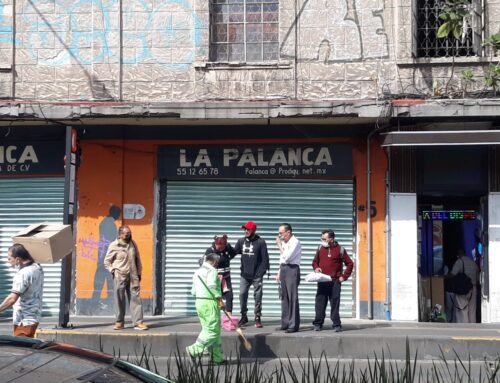This essay appeared in El DiarioLaPrensa on July 3, 2012
Joel Morales hung himself in his family’s apartment in an East Harlem housing project one month ago. He was twelve. This event seemed a senseless tragedy to some. Despondent relatives and an angry community blamed rogue, evil children. Hoping to avoid a future tragedy, some articles referred readers to anti-bullying programs.
Yet nothing could make more sense. Bullying is a symptom of a sick society that allows its children to live without the basics. Bullying is acting out—more common in poor neighborhoods, not because these kids are “bad,” but according to experts, because poverty causes kids to live with stress on a daily basis, far more than better off children. This stress leads to greater impulsiveness and less empathy for other’s misfortunes. We can’t do something about bullying therefore, while doing nothing about poverty.
Those who don’t believe that poverty causes much of the bullying should take note that between 2001 and 2007, bullying increased, to one out of five American adolescents. At the same time, the number of Americans in poverty also grew, by 4.4 million. This is no coincidence.
Chronic stress makes it difficult for kids to feel safe; it’s to be expected that kids who don’t feel safe will act out more and will fail to think of others’ feelings. Imagine whether you would stop to help someone else if you were in the path of an oncoming train, and you have an idea of how a chronically stressed kid feels.
According to Eric Jensen, author of “Teaching with Poverty in Mind”, acting out and impulsiveness happens more in poor families, as a response to chronic stress. “Chronic stress exerts a devastating influence on children’s physical, emotional and cognitive functioning,” says Jensen. In poor homes, kids are also less likely to participate in stress reducing activities like going to the park, playing sports and getting exercise, because these activities require their parents’ supervision, time and money. The television becomes an inexpensive babysitter though it is hard to control the values it teaches.
The healthy responses we’d rather see in kids like sympathy, cooperation, and compassion, are not natural responses. These must be taught. Poor kids have less of an opportunity to learn these from their parents, who are away from their children daily in low wage work, or alternatively, spending hours in offices and “job skills” trainings to satisfy requirements of receiving welfare assistance. These parents may not have any energy left by evening to demonstrate compassion, forgiveness and empathy to the kids. Parents stressed out over finances inadvertently pass on the stress to their children. Poor kids are more likely to turn to iffy role models like peers (who also have stressed out parents), where it’s unlikely they’ll see behavior worth imitating.
It is a given that poverty causes stress. Poor children have more anxiety, feel more detached. Studies have reported that low income kids suffer from depression more than other children. In East Harlem, where Joel lived, and where I was a social worker until 2011, 36% of households live on less than $18,000 a year, compared to the better off Upper East Side where only 8% do. In East Harlem, 24% of kids are obese, while in the Upper East Side, only 10% are. In East Harlem, 38% of kids can read at their grade level, compared to 68% in the Upper East Side.
The kids I worked with in East Harlem lived with electricity shut offs, threats of eviction, overcrowding in schools, overcrowding at home, mice and cockroaches, and family fights from all these tensions. They suffer four times more asthma, twice the obesity, than kids on the Upper East Side. They experience disappointment at Christmastime, as our best charitable efforts always fall short: ten year old boys end up with coats two sizes too small, or a toy appropriate for a six year old. Kids come home to mothers who have been insulted in welfare offices, had their Food Stamp case closed on a Friday night, and other indignities. These children are the ones least able to be emotionally responsive and sympathetic to their peers. A child’s anger toward conditions he cannot understand piles up and is taken out on other children.
This is a recipe that will convert an entire neighborhood of children into bullies. It’s a miracle that given the chronic stress our society permits kids to endure, we don’t have more bullies. Oh, but actually we do. Today’s young bullies are not just tomorrow’s inmates. They are tomorrow’s compassionless and entitled leaders: of companies, of banks, of nations.
Teaching a few kids tolerance in an anti-bullying workshop is of little value when all the lessons in the real world fail to teach compassion, empathy, forgiveness, and a commitment to providing for children. Children have excellent hypocrisy meters. Joel probably did, and so do the kids who bullied him.






Leave A Comment